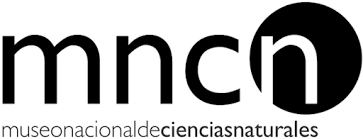Iberian Peninsula and Balearic Island Bathynellacea (Crustacea, Syncarida) database
-
Code
MNCN-AIC -
Registration date
14/04/2014 - Download the sheet
Description
This is the first published database of Bathynellacea. It includes data of bathynellids (Crustacea, Bathynellacea) from the Iberian Peninsula and Balearic Island collected along 64 years (1949 to 2013). The samples come from groundwater (caves, springs, wells and hyporrheic habitat associated rivers) from both sampling campaigns and occasional sampling conducted throughout the Iberian Peninsula and Balearic Islands. This dataset was developed to determine the current distribution patterns of bathynellids species at the scale of the Iberian Peninsula. It also contributes to the knowledge of groundwater Biodiversity in the Iberian Peninsula and to identify endemic fauna at different geographic scales (country, counties and localities). The dataset lists ocurrence data of bathynellids distribution, sampling sites (with localities, county and geographic coordinates), taxonomic information (from family to species level) and sampling sources (collector and sampling dates) for all records. The data were compiled by A.I. Camacho (AIC) and come from own samples, literature and samples donated by several Spanish and foreign researchers which were studied by AIC. The descriptions of new species and species identifications have been carried out by an expert taxonomist (AIC) with 25 years experience in the bathynellids studies. Many of the sampling sites are type localities of endemic species from Iberian Peninsula. The data set includes 409 samples record corresponding to two families, 12 genera and 60 species, 42 of them formally described plus 18 taxa unpublished. This represents everything known for the study area, and nearly a quarter of all known species of Bathynellacea in the world. The main collectors are J. Notenboom & I. Meijers, R. Rouch et coll., A.I. Camacho et coll. (C. Puch, F. Molinero, A.G. Valdecasas, J. Rodriguez, members of G.E. Edelweiss and G. E. Bathynellidae). STUDY AREA DESCRIPTION_The study area includes 195 sites throughout the Iberian Peninsula and Balearic Island, and several sampling dates ranging from 1949 to 2013. The general aim, apart from the specific objectives of each project, was identifying the Bathynellacea crustacean fauna inhabiting subterranean waters of Spain and Portugal (Fauna Ibérica)STUDY EXTENT_This collection begins with the sampling campaigns by A.I. Camacho (AIC) in northern Spain for his doctoral thesis in 1983. Most of the data prior to 1983 are bibliographic although some samples studied by AIC were Bathyllenacea obtained between 1976 and 1978 by R. Rouch et coll., in three short sampling trips to different areas of the Iberian Peninsula. In addition, from 1984 to 1986 Jos Notenboom, assisted by Ines Meijers, and later P. van der Hurk & R. Leys (1986), took groundwater samples throughout Spain looking for stygobionts amphipods for the Notenboom doctoral Thesis and all Bathynellacea they found in these samples were also donated to AIC for study. The following years AIC has continued obtaining samples of this fauna throughout Spain in the framework of different research projects. It is worth noting the PASCALIS European project (2002-2004) in which AIC and his team conducted intensive sampling of groundwater fauna in the Cantabrian mountain ranges, increasing substantially the number of Bathynellacea records in Spain. The collection currently consists of over 409 samples with several thousand specimens and more than 2000 scientific preparations among which the typical series of all new species described are included. The specimens are deposited in both the Collection of Crustaceans and the Collection of Tissues and DNA of the MNCN. SAMPLING DESCRIPTION_The methods used in collecting this type of samples can be seen in Camacho 1992 and 1994. The samples are fixed in the field in formalin (4%) or ethanol 96% (for DNA studies), or are frozen. Each sample collected is studied under a binocular microscope in order to isolate the bathynellids specimens found. The specimens used for morphological study are stored in alcohol (70%). The specimens used for molecular study were directly frozen at -20ºC, in 400 ?l of distilled water. A complete dissection of all anatomical parts of specimens of type series is necessary for taxonomic study. The permanent preparations include the dissections together with entire specimens kept in special metal slides, using glycerine gelatine stained with methylene blue as the mounting medium. Anatomical examinations were performed using an oil immersion lens (100X) of an interference microscope. The specific techniques used for molecular analysis for taxonomic application are detailed in Camacho et al., 2002 and Camacho et al., 2011, 2012 and 2013. QUALITY CONTROL_Systematics reliability and consistency is backed by the experience of AIC, who made all identifications, in the field of Bathynellacea taxonomy. METHOD STEP_The collection has been computerized with Excel software, compatible with DarwinCorev2 or Darwincore 1.4Overall information
How to cite
http://gbrds.gbif.org/browse/agent?uuid=21934821-38c4-496f-a17b-e8dafd29eabf
Taxonomic coverage
Scientific names
Bathynellacea, Parabathynellidae, Bathynellidae, Iberobathynella, Paraiberobathynella, Hexaiberobathynella, Guadalopebathynella, Hexabathynella, Vejdovskybathynella, Paradoxiclamousella, Clamousella, Hispanobathynella, Bathynella, Probosciclamousella, Guarenabathynella.
Geospatial coverage
Some Africa, mainly Iberian Peninsula, some Philippines, some South America.
Digitalization
Nº of copies / records
409
Nº of species
60
Percentage of computerization
100
Percentage of georeferenced registers
100
Does it include Type specimens?
No

